What is the South Wales Metro and when will it be done?

New, larger trains and twice the number of services will be rolled out on the £1bn South Wales Metro by early 2026
- Published
The South Wales Metro - you've probably heard it being talked about at some point.
And if you live in the south Wales valleys, you might also have been living with the disruption its construction has caused - including a fair few rail replacement buses.
But from June 2024, the first tangible signs of the long-awaited metro will finally arrive for many passengers with new and additional services.
And more is promised - here's what you need to know.
What is the South Wales Metro?
The South Wales Metro is Transport for Wales' (TfW) answer to London's Tube - an integrated public transport service involving trains, trams and buses, which is currently being constructed in south-east Wales.
The work is particularly focused on what rail bosses call the core Valley lines – these are the lines that connect Cardiff with Aberdare, Coryton, Merthyr Tydfil, Rhymney and Treherbert.
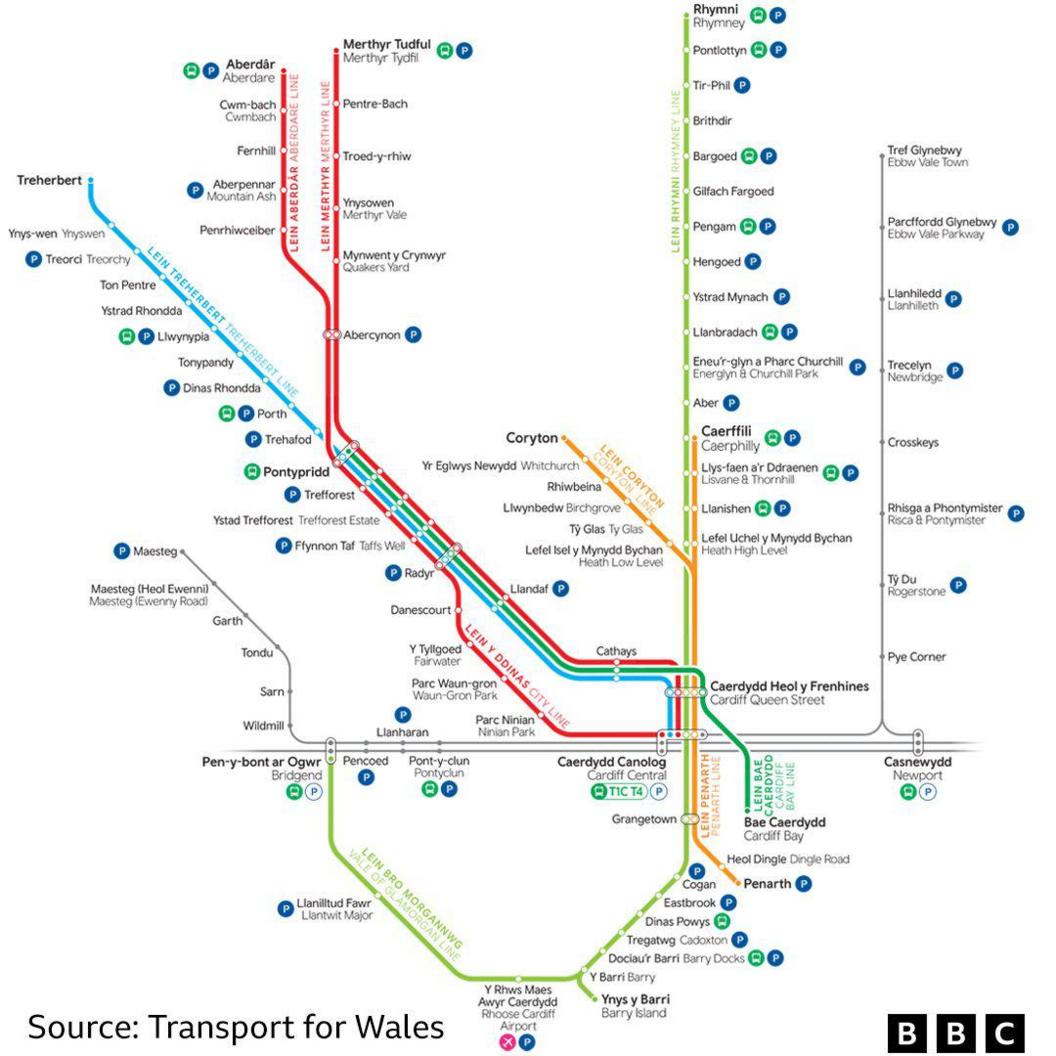
The new Transport for Wales map for the South Wales Metro
All of these lines are being electrified, allowing 36 new tram-trains to run on the 105-mile (170km) network.
Those new trains have already been delivered and are expected to be in service by the end of 2024.
Some of the new trains have been rolled out across the lines already, while more will be added in time for the National Eisteddfod in August, which is expected to bring more than 150,000 visitors to Pontypridd.
The train service that is mimicking London's Tube
- Published31 May 2024
Why a 49-mile train journey took me seven hours
- Published21 October 2023
All change! UK’s least connected train station added to more routes
- Published27 May 2024
In addition, 40 stations are being renovated.
The hope is that, within two years, passengers will be able to forget about traditional timetables because there will be so many services running every hour, with at least one every 15 minutes.
Is the South Wales Metro an underground?
While the colourful Metro map looks a lot like the London Underground, the current plans for the network are over ground – barring a few small exceptions, such as the tunnel on the line between Cardiff and Caerphilly.
When will the South Wales Metro be finished?
The first phase is due to be completed by the start of 2026.
By this point, people living in or around Aberdare, Merthyr Tydfil and Treherbert will have access to four trains per hour to Cardiff - which means Pontypridd will have, on average, a train every three minutes to the Welsh capital.

There will be 20 trains an hour past Castell Coch between Cardiff and Pontypridd within two years
"When that kind of service begins is the time people go 'wow, this is a completely different kind of network, a London Underground type service'," said Prof Mark Barry, who has been involved with the scheme since it was first suggested in 2011.
But the doubling of service frequency cannot happen until major signalling and track upgrades at Cardiff's Queen Street interchange are completed.
"Having brand new trains that are more reliable and having a frequency of services that is twice what they are now, using a train will become more attractive than siting in rush hour traffic getting into Cardiff,” said Jan Chaudhry-Van der Velde, TfW’s chief operations officer.
"It might mean changing train but from end-to-end it'll be quicker and be a bit more like using the London Underground."
Will there be any new South Wales Metro stations?
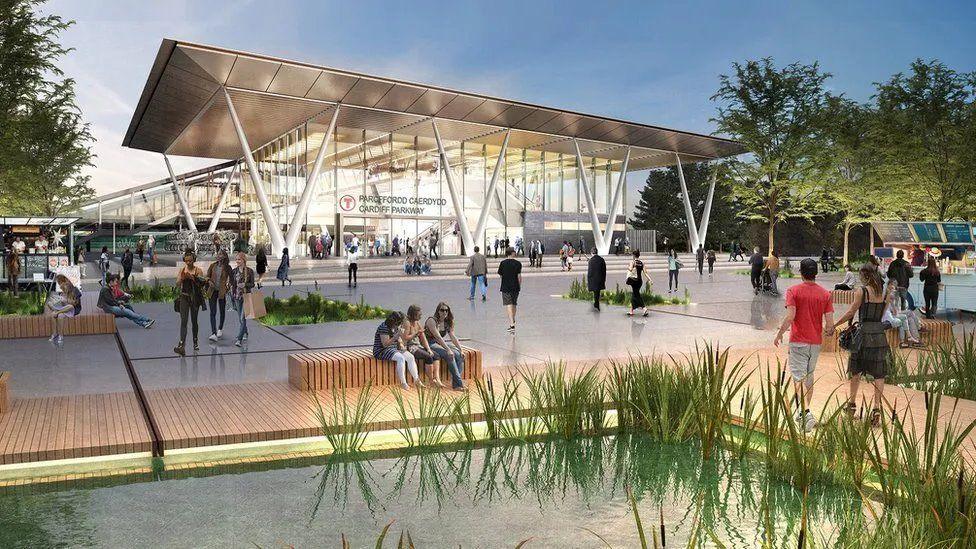
Cardiff has 20 railway stations but Wales' capital could be getting a few more, including Cardiff Parkway on the east of the city
There is a new station currently being built at Butetown, in Cardiff.
There are also proposals for a number of new stations across the south Wales network, including Cardiff Parkway, Cardiff East, Newport West, halts at Somerton and Llanwern, external in Newport and a station at Magor and Undy in Monmouthshire.
Is Cardiff getting a metro?
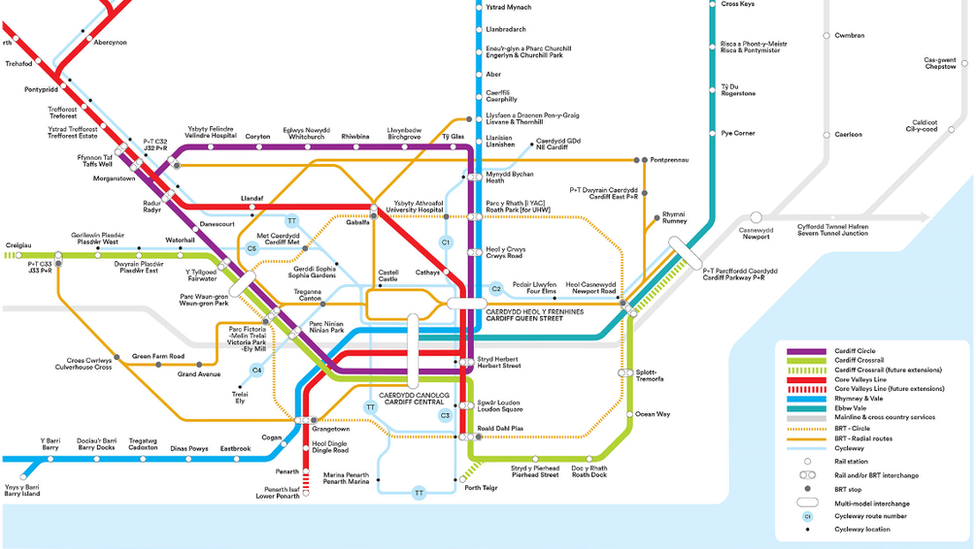
The proposed Cardiff Cross Rail project
The South Wales Metro has been described as transformative for people in the valleys getting to and from Cardiff.
But one criticism is that it won't make much of a difference in Wales' capital.
"The South Wales Metro will be transformational for areas around Cardiff but large parts of the city are not going to see any change in service frequency or capacity," said Prof Barry.
Some areas of the city - like Radyr, Llandaff, Cathays and the valleys hub at Cardiff Queen Street - will get more trains, but many parts will not in the first metro phase.
Is Cardiff getting a tram?
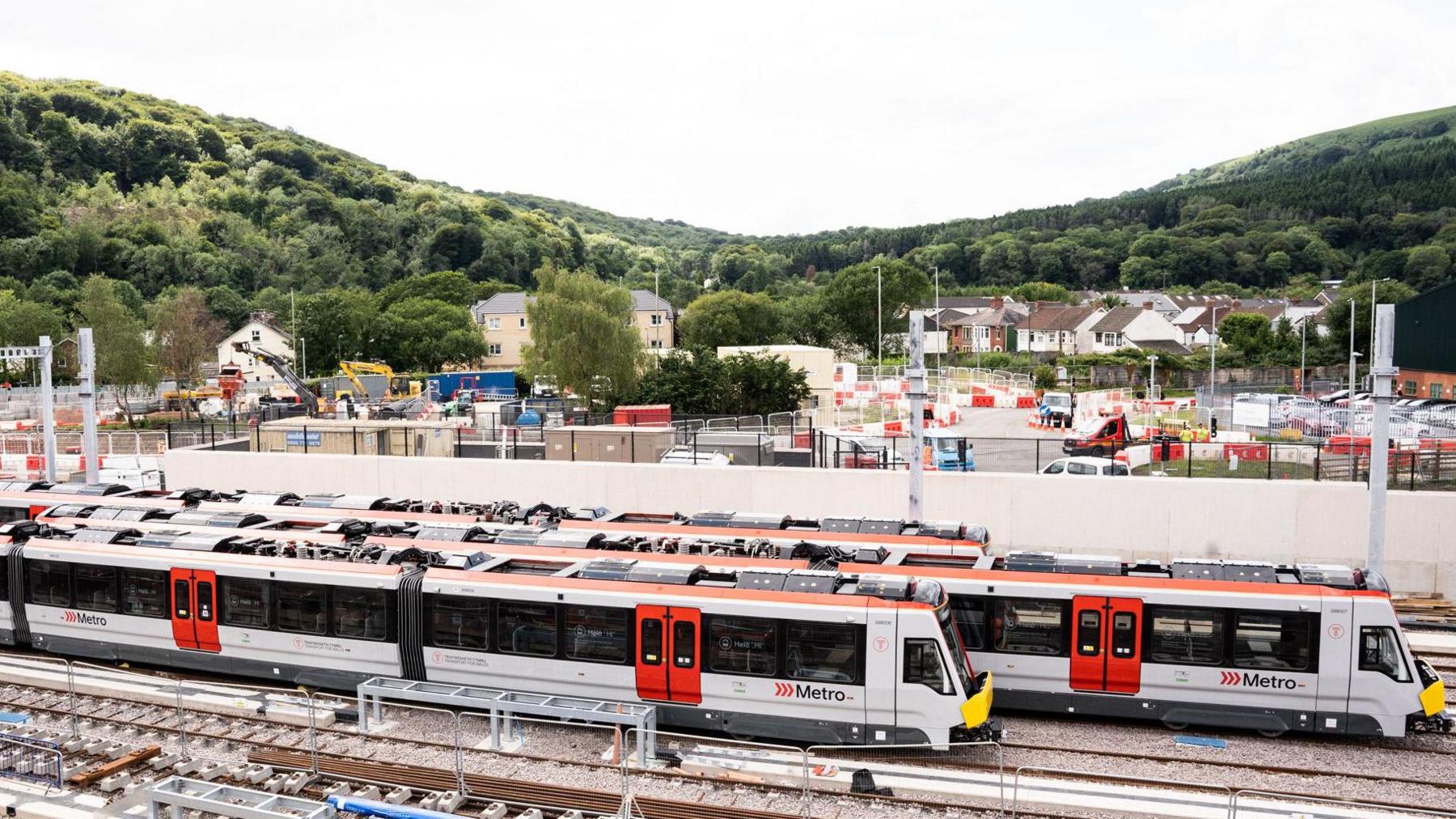
Some 36 new tram-trains will run on the South Wales Metro in the valleys from later this year
While the South Wales Metro is largely focussed on the valleys, one development that is in the works for the capital is Cardiff Crossrail.
This is the plan for a tram to connect Cardiff Central station with Cardiff Bay.
The Welsh government and the UK government have pledged £50m each towards the development.
Construction is due to begin in 2025, in time for a proposed £250m indoor arena in Cardiff Bay which is due to open in 2026.
What about Swansea, west and north Wales?
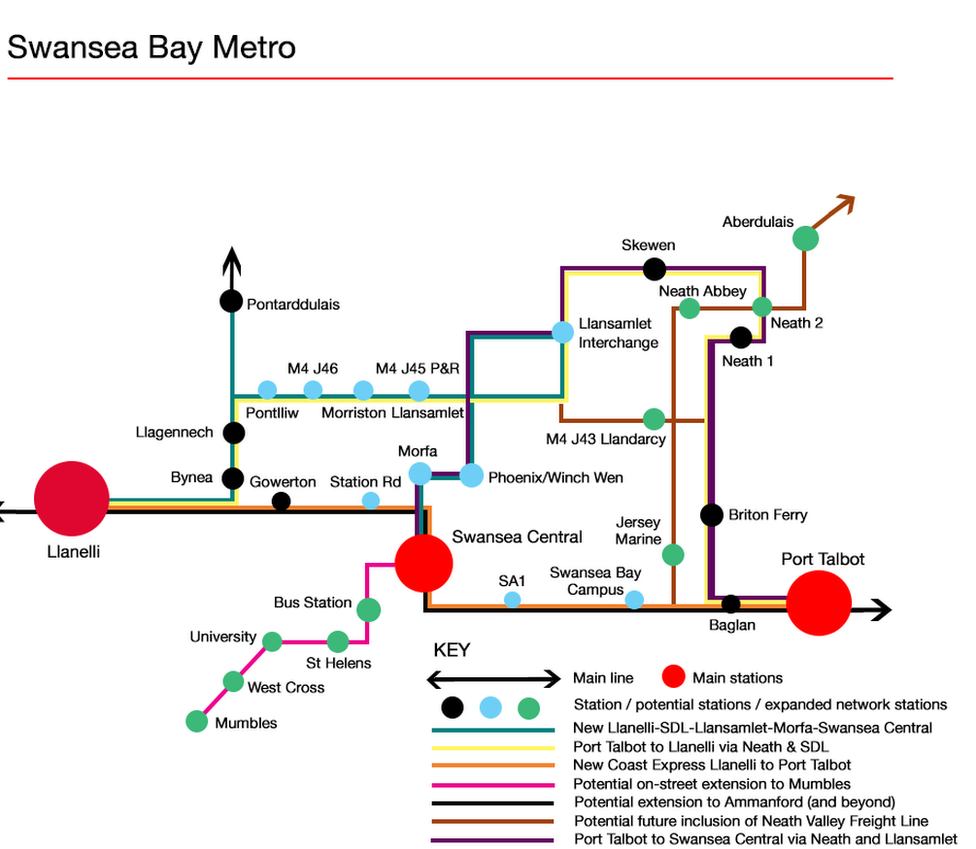
This is an initial outline map on how a metro system around Swansea might look
Urban metro systems are for areas where there's lots of people - so it wouldn't be suitable for many rural parts of Wales.
But after seeing Cardiff and the south Wales Valleys getting a metro, people in Swansea and north Wales will be wondering when they will be getting their own.
Both have been discussed but nothing like the South Wales Metro service has been finalised because rail improvements are expensive and funding is complicated.
Let's start with Swansea, which already feels hard done by because electrification of the south Wales mainline was promised all the way to Swansea - but then only completed as far as Cardiff.
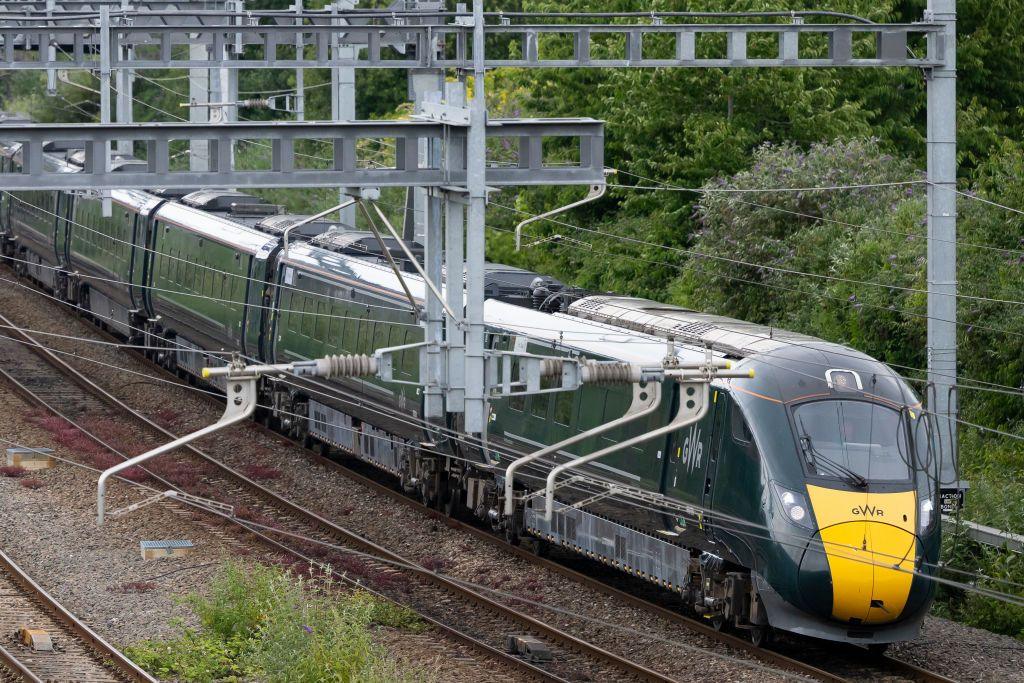
Electrification on the south Wales mainline to London ends at Cardiff
Plans to improve connectivity in west Wales are in their early stages, but TfW want to make journeys between Swansea, Carmarthen and Milford Haven quicker, more frequent and faster.
There are proposals to build eight new stations too - seven commuter halts around Swansea and another at St Clears in Carmarthenshire .
In the north, a rail service linking Wrexham and Liverpool was reintroduced five years ago and there's more trains on the line between Wrexham and Bidston, external, on Wirral.
TfW wants to add more services on the north Wales mainline, external between Holyhead and Chester - but all these upgrades will cost hundreds of millions of pound.
The complicated bit
Now this is where it gets a little complicated - so bear with us.
The operation of the railway in Wales is a Welsh government responsibility.
But infrastructure planning and the funding of Network Rail in Wales remains reserved to the UK government.
When the UK government spends money on things in England that are devolved to Wales, such as health and education, it normally triggers extra funding for Wales.
But, as most rail infrastructure is not devolved, the same does not apply.
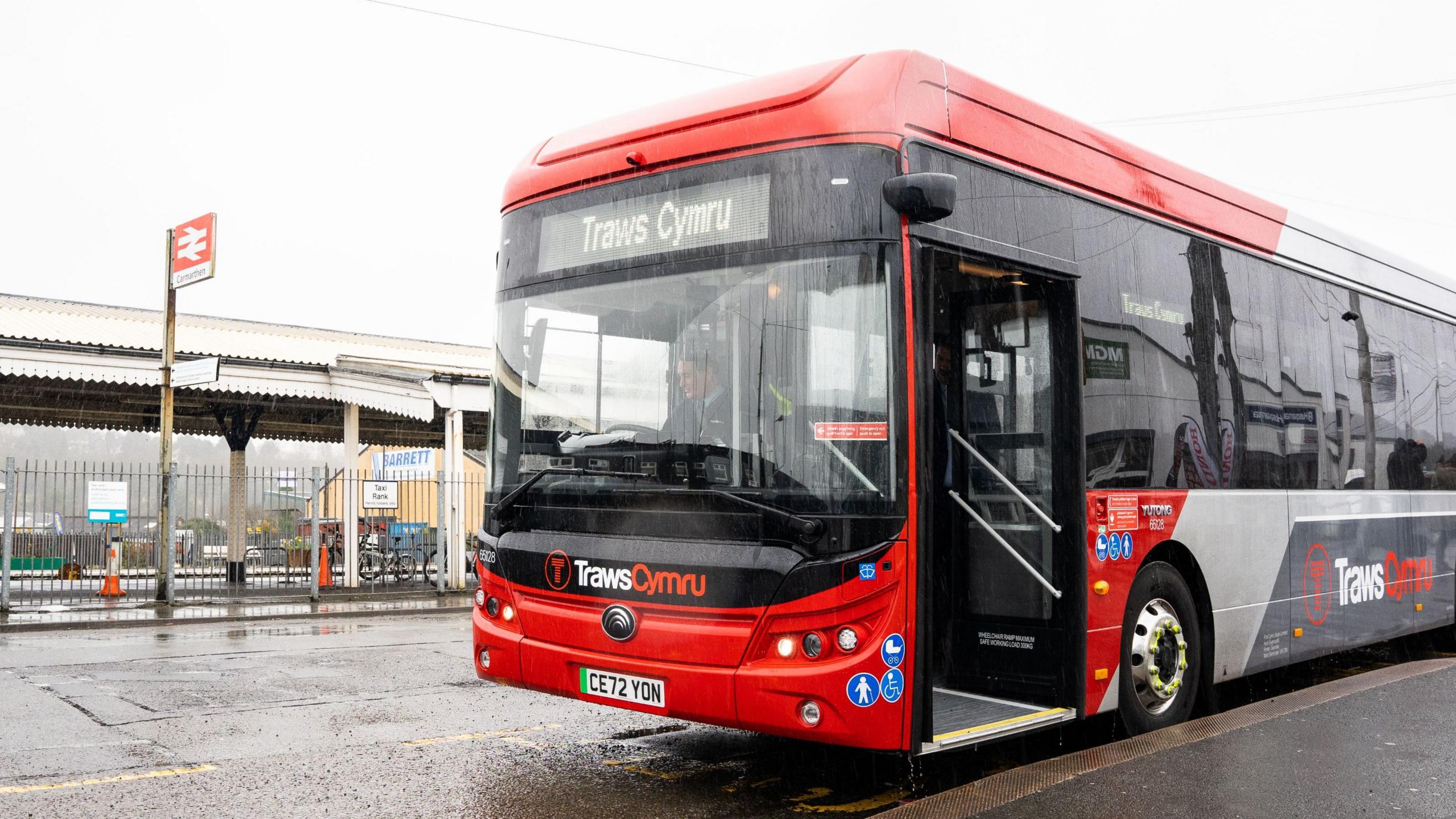
Transport for Wales' long-term plan is to take over bus franchises in Wales to give passengers an integrated public transpirt network
It means that when the Welsh government spends money on rail, it has to come out of its overall budget.
"When Welsh government spends money on rail - and they have done on the South Wales Metro - that comes out of their block grant from Westminster," said Prof Barry.
"But that doesn't include money meant for rail, so it's come out of a pot possibly meant for something like health or education.”
In a nutshell, it means that rail projects in Wales - and how they are funded - is complicated, and can take a long time.